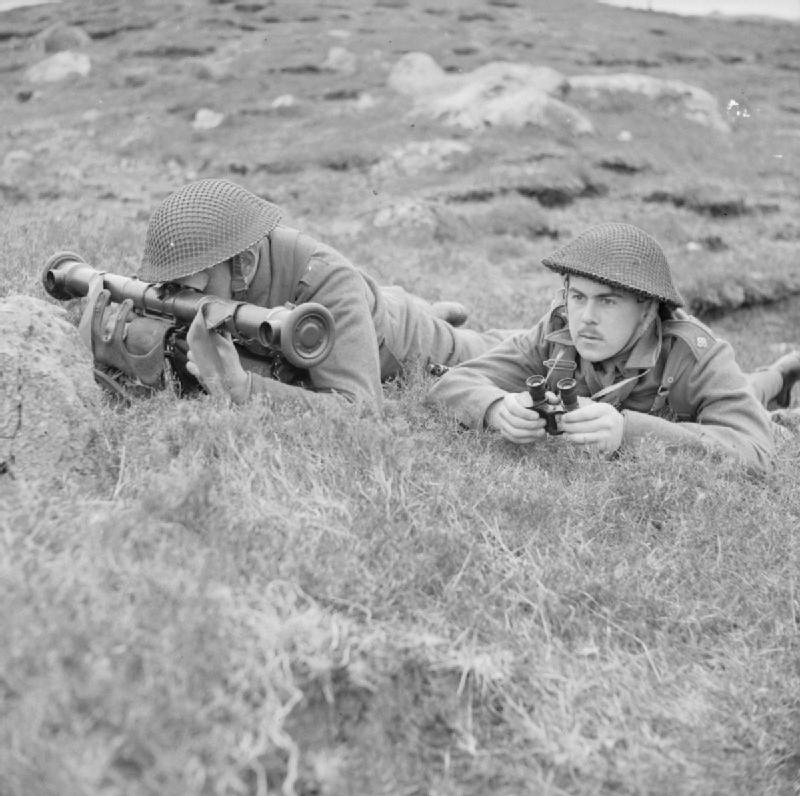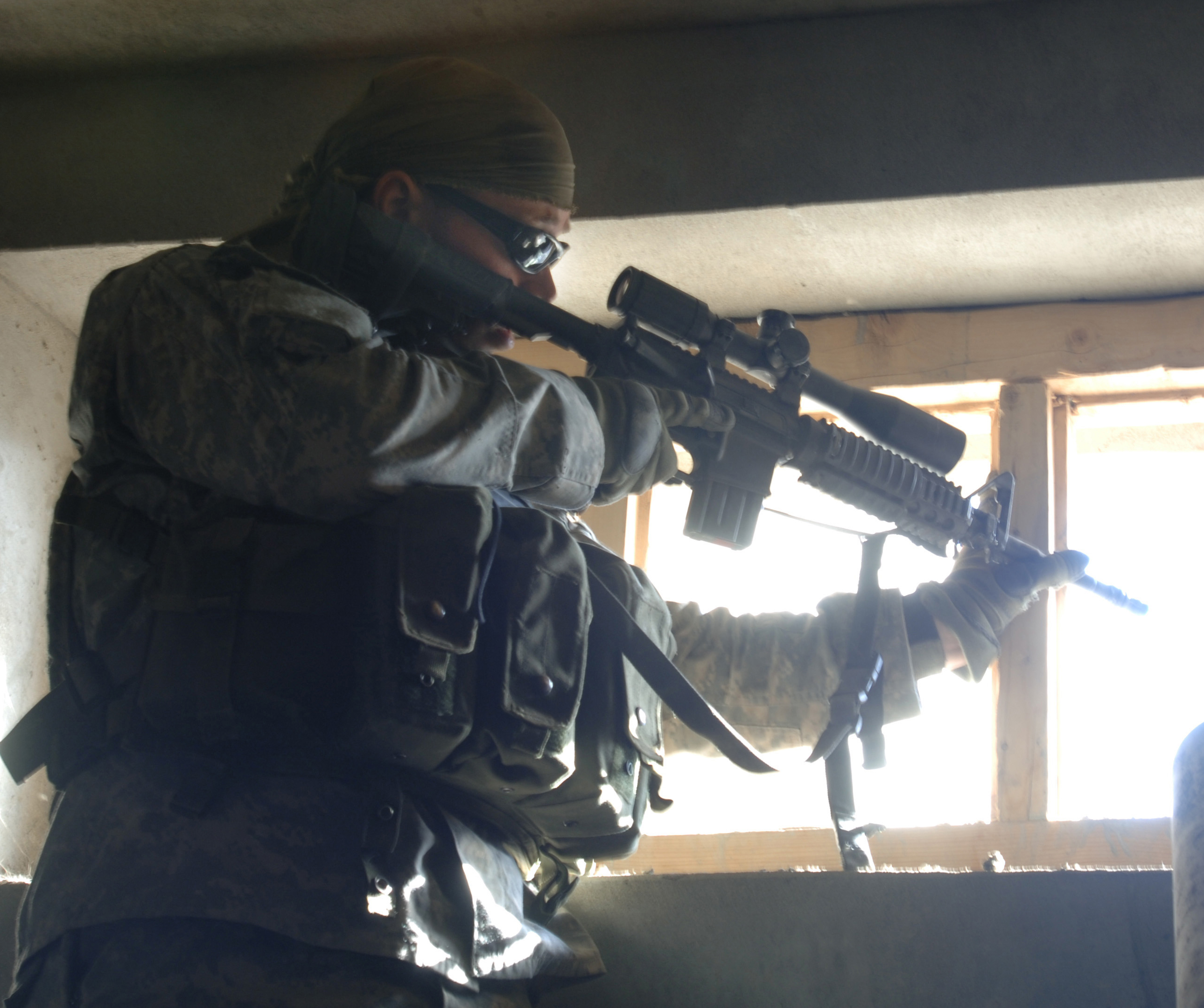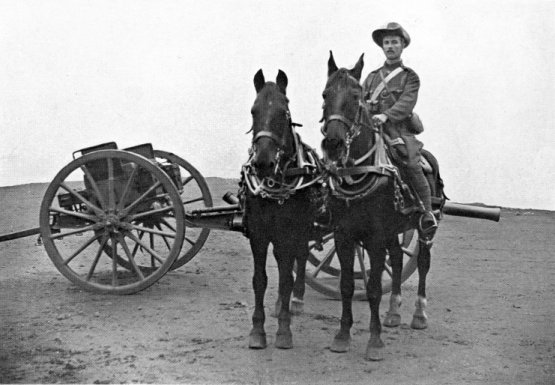|
Lovat Scouts
The Lovat Scouts was a British Army unit first formed during the Second Boer War as a Scottish Highland yeomanry regiment of the British Army. They were the first known military unit to wear a ghillie suit and in 1916 formally became the British Army's first sniper unit, then known as "sharpshooters". It served in the First World War and then Second World War. History Formation and early history The regiment was formed in January 1900 for service in the Second Boer War by Simon Fraser, 14th Lord Lovat as the Lovat Scouts.Frederick, pp. 42–3. Recruited initially from gamekeepers on Highland estates, the unit was commanded by the Hon. Andrew David Murray from his appointment by Lord Lovat in February 1900 until killed in action September 1901. After his death Lord Lovat, who had hitherto served as second-in-command of the regiment, took command himself (now aged 29), and remained in command till the end of the war. Well practiced in the arts of marksmanship, fieldcraft and milita ... [...More Info...] [...Related Items...] OR: [Wikipedia] [Google] [Baidu] |
Yeomanry
Yeomanry is a designation used by a number of units or sub-units of the British Army, British Army Reserve (United Kingdom), Army Reserve, descended from volunteer British Cavalry, cavalry regiments. Today, Yeomanry units serve in a variety of different military roles. History Origins In the 1790s, following the French Revolution and the rise of Napoleon Bonaparte, the perceived threat of invasion of the Kingdom of Great Britain was high. To improve the country's defences, British Volunteer Corps, Volunteer regiments were raised in many counties from yeoman, yeomen. While the word "yeoman" in normal use meant a small farmer who owned his land, Yeomanry officers were drawn from the nobility or the landed gentry, and many of the men were the officers' tenants or had other forms of obligation to the officers. At its formation, the force was referred to as the Yeomanry Cavalry. Members of the yeomanry were not obliged to serve overseas without their individual consent. Early 19th ... [...More Info...] [...Related Items...] OR: [Wikipedia] [Google] [Baidu] |
Marksman
A marksman is a person who is skilled in precision shooting using projectile weapons (in modern days most commonly an accurized scoped long gun such as designated marksman rifle or a sniper rifle) to shoot at high-value targets at longer-than-usual ranges. The proficiency in precision shooting is known as a shooter's marksmanship, which can be used to describe both gunnery and archery. Description In common usage, "sharpshooter" and "marksman" are synonyms. Within the specialized fields of shooting sports and military usage, however, sharpshooter and marksman each refer to different levels of skill. Specifically, in the US Army, "marksman" is a rating below "sharpshooter" and "expert". Four levels of skill are generally recognized today in American military and civilian shooting circles: unqualified, marksman, sharpshooter, and expert. Marksmanship badges for the three qualified levels are commonly awarded to both civilian and military shooters who attain proficiency in shoo ... [...More Info...] [...Related Items...] OR: [Wikipedia] [Google] [Baidu] |
Gallipoli
The Gallipoli peninsula (; tr, Gelibolu Yarımadası; grc, Χερσόνησος της Καλλίπολης, ) is located in the southern part of East Thrace, the European part of Turkey, with the Aegean Sea to the west and the Dardanelles strait to the east. Gallipoli is the Italian form of the Greek name (), meaning 'beautiful city', the original name of the modern town of Gelibolu. In antiquity, the peninsula was known as the Thracian Chersonese ( grc, Θρακικὴ Χερσόνησος, ; la, Chersonesus Thracica). The peninsula runs in a south-westerly direction into the Aegean Sea, between the Dardanelles (formerly known as the Hellespont), and the Gulf of Saros (formerly the bay of Melas). In antiquity, it was protected by the Long Wall, a defensive structure built across the narrowest part of the peninsula near the ancient city of Agora. The isthmus traversed by the wall was only 36 stadia in breadthHerodotus, ''The Histories''vi. 36 Xenophon, ibid.; Pseudo ... [...More Info...] [...Related Items...] OR: [Wikipedia] [Google] [Baidu] |
Territorial Force Imperial Service Badge
{{Infobox military award , name= Territorial Force Imperial Service Badge , image=ImperialServiceClasp.jpg , image_size=300px , caption= The Imperial Service Badge , presenter= The United Kingdom , type= Badge , eligibility= Those officers, NCOs and men of the Territorial Force, who undertook liability in the event of national emergency, to serve in any place outside the United Kingdom, in accordance with the provisions of Section XIII (2) (a) of the Territorial and Reserve Forces Act, 1907. , campaign= Pre-WW1 and First World War. , status= This award: *Ceased to exist when the Territorial Force became the Territorial Army in 1921. , description= as follows: *Ribbon = None *Metal = Cupro-nickel / white-metal *Size = 10mm by 43mm *Shape = Horizontal Bar surmounted by royal crown. Raised inscription: ''IMPERIAL SERVICE''. , clasps= , established= 1910 , firstawarded= , lastawarded= , total_awarded= , total_awarded_posthumously= , total_recipients= , individual= , higher= , same= ... [...More Info...] [...Related Items...] OR: [Wikipedia] [Google] [Baidu] |
7 Edw
7 (seven) is the natural number following 6 and preceding 8. It is the only prime number preceding a cube. As an early prime number in the series of positive integers, the number seven has greatly symbolic associations in religion, mythology, superstition and philosophy. The seven Classical planets resulted in seven being the number of days in a week. It is often considered lucky in Western culture and is often seen as highly symbolic. Unlike Western culture, in Vietnamese culture, the number seven is sometimes considered unlucky. It is the first natural number whose pronunciation contains more than one syllable. Evolution of the Arabic digit In the beginning, Indians wrote 7 more or less in one stroke as a curve that looks like an uppercase vertically inverted. The western Ghubar Arabs' main contribution was to make the longer line diagonal rather than straight, though they showed some tendencies to making the digit more rectilinear. The eastern Arabs developed the digit ... [...More Info...] [...Related Items...] OR: [Wikipedia] [Google] [Baidu] |
Territorial And Reserve Forces Act 1907
The Territorial and Reserve Forces Act 1907 ('' 7 Edw. 7, c.9'') was an Act of the Parliament of the United Kingdom that reformed the auxiliary forces of the British Army by transferring existing Volunteer and Yeomanry units into a new Territorial Force (TF); and disbanding the Militia to form a new Special Reserve of the Regular Army. This reorganisation formed a major part of the Haldane Reforms, named after the creator of the Act, Richard Haldane. The lessons learned during the South African War of 1899-1902 had reinforced the idea that the Regular Army was not capable of fighting a prolonged full-scale war without significant assistance; almost all regular units in the United Kingdom had been deployed overseas within four months of the outbreak of hostilities. Furthermore, by the end of the first year of fighting, the Regular Reserve and the Militia Reserve had been entirely exhausted. (Regular reservists were members of the Regular Army who had retired from the active-dut ... [...More Info...] [...Related Items...] OR: [Wikipedia] [Google] [Baidu] |
Beauly
Beauly ( ; ; gd, A' Mhanachainn) is a village in the Highland area, on the River Beauly, west of Inverness by the Far North railway line. The town is historically within Kilmorack Parish of the Scottish County of Inverness. The land around Beauly is fertile - historically corn was grown extensively and more recently fruit has successfully been farmed. The village historically traded in coal, timber, lime, grain, and fish. History Early years Beauly is the site of the Beauly Priory, or the Priory Church of the Blessed Virgin and John the Baptist, founded in 1230 by John Byset of the Aird, for Valliscaulian monks. Following the Reformation, the buildings (except for the church, which is now a ruin) passed into the possession of Lord Lovat. Local tradition has it that Mary, Queen of Scots, once visited Beauly and had exclaimed: "Ç'est un beau lieu", whereby came the name Beauly. Queen Mary, in 1563, hunted and took her summer journeys in the west and southwest of Scotlan ... [...More Info...] [...Related Items...] OR: [Wikipedia] [Google] [Baidu] |
Territorial Force
The Territorial Force was a part-time volunteer component of the British Army, created in 1908 to augment British land forces without resorting to conscription. The new organisation consolidated the 19th-century Volunteer Force and yeomanry into a unified auxiliary, commanded by the War Office and administered by local County Territorial Associations. The Territorial Force was designed to reinforce the regular army in expeditionary operations abroad, but because of political opposition it was assigned to home defence. Members were liable for service anywhere in the UK and could not be compelled to serve overseas. In the first two months of the First World War, territorials volunteered for foreign service in significant numbers, allowing territorial units to be deployed abroad. They saw their first action on the Western Front (World War I), Western Front during the initial Race to the Sea, German offensive of 1914, and the force filled the gap between the near destruction of the ... [...More Info...] [...Related Items...] OR: [Wikipedia] [Google] [Baidu] |
Union-Castle Line
The Union-Castle Line was a British shipping line that operated a fleet of passenger liners and cargo ships between Europe and Africa from 1900 to 1977. It was formed from the merger of the Union Line and Castle Shipping Line. It merged with Bullard King and Clan Line in 1956 to form British & Commonwealth Shipping, and then with South African Marine Corporation (commonly referred to as Safmarine) in 1973 to create International Liner Services, but maintained its separate identity throughout. Its shipping operations ceased in 1977. Predecessor lines The Union Line was founded in 1853 as the Southampton Steam Shipping Company to transport coal from South Wales to Southampton. It was renamed the Union Steam Collier Company and then the Union Steamship Company. In 1857, renamed the Union Line, it won a contract to carry mail to South Africa, mainly the Cape Colony. The inaugural sailing of the ''Dane'' left Southampton on 15 September. Meanwhile, Donald Currie had built up ... [...More Info...] [...Related Items...] OR: [Wikipedia] [Google] [Baidu] |
Imperial Yeomanry
The Imperial Yeomanry was a volunteer mounted force of the British Army that mainly saw action during the Second Boer War. Created on 2 January 1900, the force was initially recruited from the middle classes and traditional yeomanry sources, but subsequent contingents were more significantly working class in their composition. The existing yeomanry regiments contributed only a small proportion of the total Imperial Yeomanry establishment. In Ireland 120 men were recruited in February 1900. It was officially disbanded in 1908, with individual Yeomanry regiments incorporated into the new Territorial Force. Background The Dutch Cape Colony was established in modern-day South Africa in the second half of the 17th century. The colony subsequently passed to the Dutch East India Company which, in 1815, sold it to the British, thus strengthening the rival British-ruled Cape Colony. Unhappy with the subsequent British governance, the Dutch settlers, known now as the Boers, established their ... [...More Info...] [...Related Items...] OR: [Wikipedia] [Google] [Baidu] |
Black Watch
The Black Watch, 3rd Battalion, Royal Regiment of Scotland (3 SCOTS) is an infantry battalion of the Royal Regiment of Scotland. The regiment was created as part of the Childers Reforms in 1881, when the 42nd (Royal Highland) Regiment of Foot (The Black Watch) was amalgamated with the 73rd (Perthshire) Regiment of Foot. It was known as The Black Watch (Royal Highlanders) from 1881 to 1931 and The Black Watch (Royal Highland Regiment) from 1931 to 2006. Part of the Scottish Division for administrative purposes from 1967, it was the senior Highland regiment. It has been part of the Scottish, Welsh and Irish Division for administrative purposes from 2017. Origin of the name The source of the regiment's name is uncertain. In 1725, following the Jacobite rebellion of 1715, General George Wade was authorised by George I to form six "watch" companies to patrol the Highlands of Scotland, three from Clan Campbell, one from Clan Fraser of Lovat, one from Clan Munro and one f ... [...More Info...] [...Related Items...] OR: [Wikipedia] [Google] [Baidu] |
Ghillie Suit
A ghillie suit is a type of camouflage clothing designed to resemble the background environment such as foliage, snow or sand. Typically, it is a net or cloth garment covered in loose strips of burlap ( hessian), cloth, or twine, sometimes made to look like leaves and twigs, and optionally augmented with scraps of foliage from the area. Military personnel, police, hunters, and nature photographers may wear a ghillie suit to blend into their surroundings and conceal themselves from enemies or targets. The suit gives the wearer's outline a three-dimensional breakup, rather than a linear one. When manufactured correctly, the suit will move in the wind in the same way as surrounding foliage. Some ghillie suits are made with light and breathable material that allows a person to wear a shirt underneath. A well-made ghillie suit is extremely effective in camouflaging its wearer. A ghillie-suited soldier sitting perfectly still with local flora attached to their webbing is nearly impossi ... [...More Info...] [...Related Items...] OR: [Wikipedia] [Google] [Baidu] |








